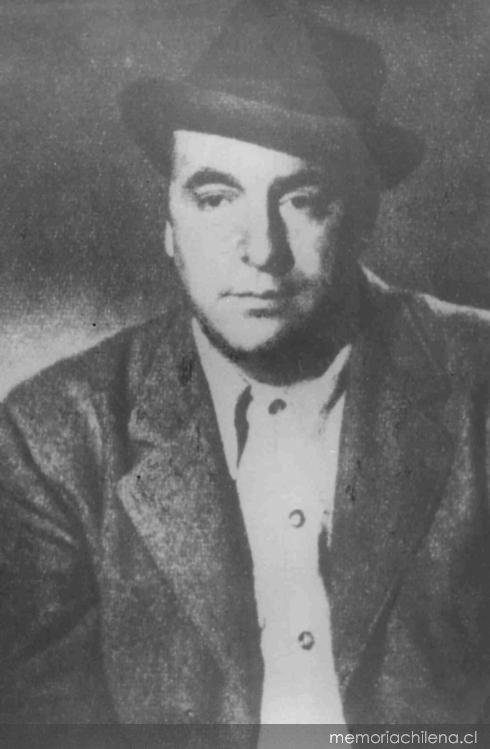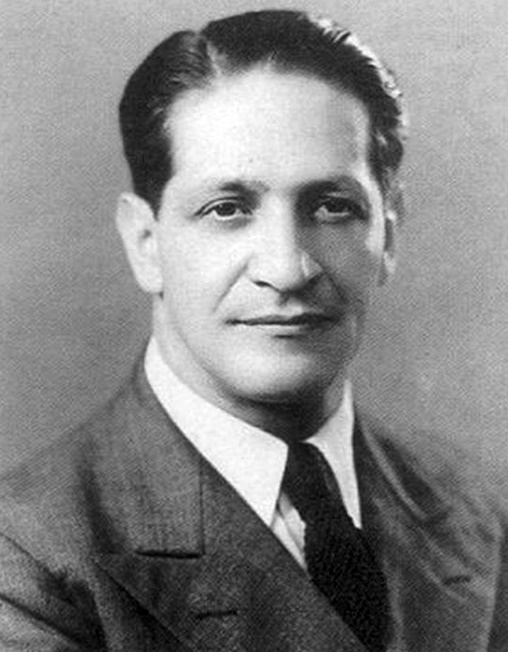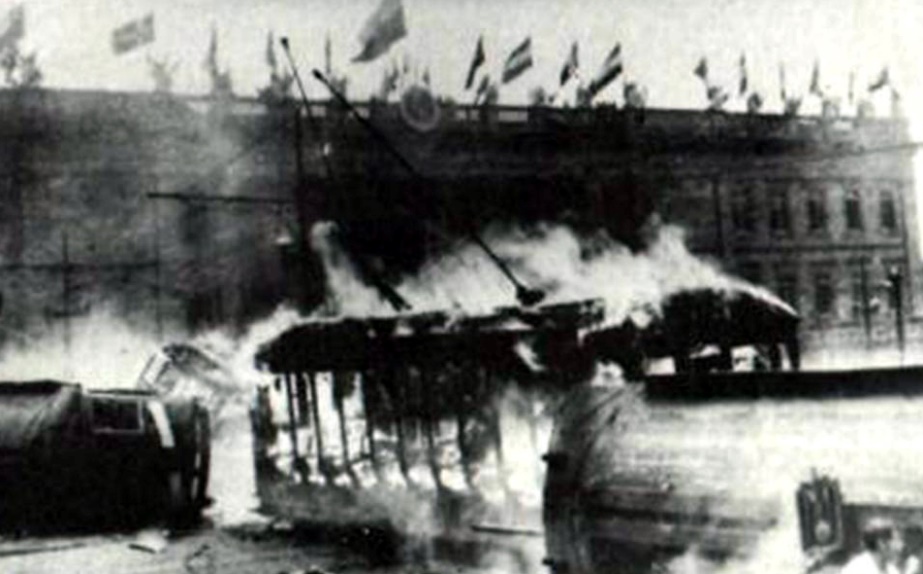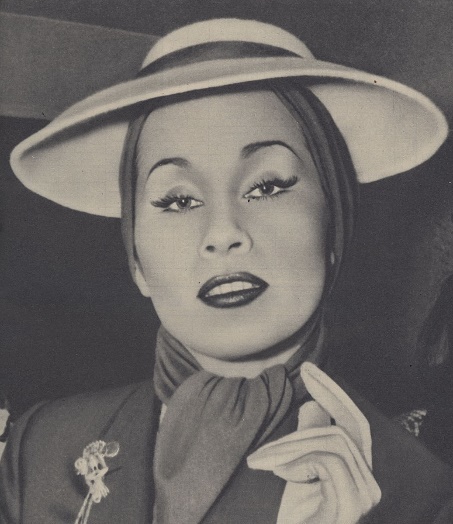The Dictionary Of Pacific Alliance Illustrious Personalities: Linguacultural Lexicography And Teaching Spanish
Abstract
The present article summarizes the results of the research on the illustrious personalities of the four founding member states of the Pacific Alliance; their extra- and intralinguistic parameters are determined from the point of view of their statics and dynamics. The authors analyze and systemize the illustrious personalities of four Latin American Spanish-speaking countries and suggest their own definition of the term “illustrious personality” as an ambivalent denomination of the person and the existing body of knowledge related to the person in the collective memory of the native speakers. In this case, it is the collective memory of the speakers of the corresponding national variants of Spanish, taking into consideration their socio-historical and culturological significance for the corresponding linguacultures, which is reflected in The Dictionary of Pacific Alliance Illustrious Personalities. The authors selected 60 personalities for each country based on their linguacultural, associative and commemorative relevance. The historical, linguistic and semiotic approaches used in the research reveal the characteristics of the national identity of the four countries of the Pacific Alliance. Different types of the onomastic identification of the protagonists are established, as well as allusive and intertextual parameters of the corresponding cultures. Thus, systemizing the data about the iconic illustrious personalities of the Pacific Alliance represents a transdisciplinary task of the contemporary onomastics, Romance philology, general and applied linguistics, the theory and methodics of teaching foreign language, but it is also an important step towards creating a typology that would reflect different types of onomastic dominants within a society.
Keywords: DictionaryonomasticsPacific Alliancepersonalityproper name
Introduction
Having in mind the current stage of the development of Romance linguistics, the sociolinguistic factors are gaining relevance in the research of the historical linguistics. The diatopic variation of Latin-American Spanish is constantly under the radar of the contemporary Romance linguistics, which perceives the Spanish language as a set of divergence and convergence parameters. Therefore, the names of the illustrious personalities of each Latin American country can be perceived and studied as certain markers of their national identities.
Culture-onomastics-society triad
This paper elaborates the onomastic issues within a conceptual triad culture-onomastics-society based on an exploratory and mixed investigation of the data on 240 illustrious figures from Chile, Colombia, Mexico, Peru (60 for each country), the four founding member countries of the Pacific Alliance (2011). Currently, there are 59 observer states from five continents forming parts of the Alliance. Its main goal is the creation of a single integration space for the free movement of goods for purposes of trade and cooperation, which leads to an intensification of contacts between its members and migration processes. Pacific Alliance is an active player in the global market (Ripoll, 2018).
Problem Statement
Learning about national identity of a specific country through studying its illustrious personalities, collecting their biographical data based on a multidisciplinary approach, as well as analyzing associations and collective allusions, periphrases, nicknames, has both theoretical and practical value. Talking about illustrious personalities - real or fictional ones - highlights what the society identifies with, the stereotypes and self-perception models proper for a concrete nation, and it has an even stronger impact when it comes to the pluricentric Spanish language.
Research Questions
The interest towards the proper names comes from an ancient tradition. Even the ancient philosophers argued about the name and the object it denominates, about the authenticity of names and the character of naming. Despite such a long-term interest and existence of a special discipline known as onomastics, focused on studying proper names, many questions still remain without an exact explanation.
One of the unanswered questions regarding the theory of proper names is the problem of proper names’ semantics: “the semantics of proper names is not only an area of little research, it is also very vague […] Many people often have doubts about whether it is a right decision to single out semantics as a special aspect of the proper name” (Superanskaya, 2012, p. 255).
Western researchers usually associate the definition of the notion “proper name” with such scholars as John Stuart Mill and Bertrand Russell, whose work has much contributed to the shaping of thought of the authors of modern onomastic research. They are also related to two main approaches to the reference of proper name: classical and causal (Vasilyeva, 2009).
Gardiner (1954) gives the following definition of the proper name: “A proper name is a word or group of words recognized as indicating or tending to indicate the object or objects to which it refers by virtue of its distinctive sound alone, without regard to any meaning possessed by that sound from the start, or acquired by it through association with the said object or objects” (p. 43).
The main goal of this research
According to Lotman (2016), “the determination of the cluster of the culturally relevant phenomena is the first and crucial step to any semiotic cultural modelling” (p. 95). The illustrious personalities as famous personal names that form a unique national onomastic code within a certain linguistic culture can be considered a phenomenon relevant for semiotic cultural modelling and the interpretation of culture. The main task of present research is identifying the illustrious personalities of Mexico, Columbia, Chile and Peru, their linguacultural interpretation and assessment of their didactic importance.
Purpose of the Study
The purpose of the study consisted in the complex onomastic and linguacultural analysis of the linguistic personalities and their further reflection in the authors’ Dictionary of Pacific Alliance Illustrious Personalities; in сonducting a semantic interpretation of data on 240 (60 for each country) illustrious personalities of Chile, Columbia, Mexico, Peru; in systemizing their role in the corresponding linguacultures through identifying their associations, allusions and culturally significant data.
Research Methods
Spanish is the native language of around 400 million people from different countries and even continents. The pluricentric character of Spanish language leads to heterogeneous semiotic expansion and onomastic dominants.
The main methods used in this research are the onomastic, contrastive, discursive methods and the experience of native speakers. A formal and meaningful interpretation of data on illustrious personalities of the Pacific Alliance was carried out in the recently published Dictionary of Illustrious Personalities of the Pacific Alliance (Chesnokova et al., 2020). This Dictionary represents the first one of its kind in Russian and world lexicography. While combining the linguistic and culturological analysis, it systematizes biographical data and associative symbols of iconic personalities and characters of four countries of the Pacific Alliance: Colombia (Colombia), Mexico (México), Peru (Perú) and Chile (Chile).
Findings
The Structure of The Dictionary of Pacific Alliance Illustrious Personalities
The history of any country is full of peaks of intellectual thought, beautiful examples of art, but also with political dramas and tragedies. The authors deliberately included in their Dictionary of Illustrious Personalities of Pacific Alliance not only iconic creative personalities important for their countries and humanity as a whole (famous politicians, outstanding writers and poets, widely known artists, musicians, athletes, scientists), but also destructive type personalities (
All Dictionary entries are presented in chronological order of the birth dates of personalities (including the presumptive ones).
The structure of each Dictionary article consists of the onomastic part – with the Russian transliteration and graphic stress for its correct pronunciation – the biographical part regarding the profession of the analyzed personality and the associative part.
The Dictionary defines their protagonists in their widely used onomastic identifications (
Let us take a look at some Dictionary entries with their translations into English:
Chile
Пáбло Неру́да – псевдоним, который с шестнадцати лет использовал Рикáрдо Элиэ́сер Нефтали́ Рéйес Басоáльто (Ricardo Eliécer Neftalí Reyes Basoalto; 1914-1973). Писатель.
В историю мировой литературы Неруда вошел как создатель неповторимого поэтического слова и Лауреат Нобелевской премии по литературе 1971 г. за «поэзию, которая с первородной силой воплотила чаяния и судьбы целого континента» (Pablo Neruda – Facts. NobelPrize.org. https://www.nobelprize.org/prizes/literature/1971/neruda/facts/). По словам Гарсиа Маркеса, Неруда был самым читаемым в мире поэтом ХХ века (Wikipedia: https://en.wikipedia.org/wiki/Pablo_Neruda
) . Неруда также был дипломатом, политическим деятелем, сенатором Республики Чили, членом Центрального комитета Коммунистической партии Чили. Пабло Неруда,

Pablo Neruda is a pseudonym used by Ricardo Eliécer Neftalí Reyes Basoalto since he was 16. (1914-1973). Writer (Figure
Neruda was included in the history of literature as the originator of a unique poetic style and was awarded the Nobel Prize for Literature in 1971 “for a poetry that with the action of the elemental force brings alive a continent’s destiny and dreams” (Pablo Neruda – Facts. NobelPrize.org. https://www.nobelprize.org/prizes/literature/1971/neruda/facts/). According to Gabriel García Márquez, Neruda was the most read poet of the XX century (Wikipedia: https://en.wikipedia.org/wiki/Pablo_Neruda). Neruda was also a diplomat, a politician, a senator of the Republic of Chile, a member of the Central Committee of the national Communist Party. Pablo Neruda, Gabriela Mistral, Vicente Huidobro and Pablo de Roca form “The Four Greats of Chilean poetry”. Neruda passed away 12 days after the military coup in 1973.
Colombia
Известный колумбийский политический деятель, доктор права Национального университета Колумбии и Королевского университета, мэр Боготы в 1936 г., с 1947 г. председатель Сената. Лидер радикального крыла Либеральной партии, выступавшего с антиамериканскими лозунгами и за национализацию иностранных предприятий. Убит 9 апреля 1948 г. Его гибель стала причиной bogotazo («боготасо») – вооруженного восстания в Боготе, а затем длительного периода гражданских войн и насилия.
Этот исторический момент лег в основу фильма El Bogotazo (режиссер Хорхе Али Триана / Jorge Alí Triana, 2019) в цикле «Вновь переживём нашу историю» (Revivamos nuestra historia). (https://upload.wikimedia.org/wikipedia/commons/5/57/Bogotazo.jpg)


Jorge Eliécer Gaitán (1903-1948). Politician (Figure
Gaitán was a famous Colombian political activist with a doctoral degree in Law at the National University of Colombia and the Sapienza University of Rome, the Mayor of Bogotá in 1936 and also the President of Senate since 1947. Leader of the Liberal Party’s radical wing that used anti-American slogans and advocated for the nationalization of foreign enterprises. He was murdered on April 9, 1948. His death caused
This historical moment was depicted in the film titled “
Mexico
Гилье́рмо дель То́ро (Guillermo del Toro; р. 1964). Режиссер и писатель.
Дель Торо – ведущий режиссер и сценарист, чьи награды включают Золотой Глобус, два Оскара и Премию «Гойя». За свой первый фильм «Кронос» (1993) Дель Торо был признан исключительным режиссером с уникальным стилем, высокоэстетично сочетающим фантазию и ужас. Его самый известный фильм на испанском языке – El laberinto del fauno («Лабиринт фавна», 2007), в метафорической форме осмысливающий события Гражданской Войны в Испании. В стилистике Дель Торо сочетаются фантастические элементы, реальные драматичные события истории, сложные жизненные коллизии и проникновение в глубины психики человека (https://commons.wikimedia.org/w/index.php?curid=16769657).

Guillermo del Toro (born in 1964). Film director and writer (Figure
Del Toro is one of the leading film writers and directors, whose awards include Golden Globe, two Academy Awards and the Goya Award. Del Toro was recognized as an extraordinary director with a unique style that very aesthetically combines fantasy and horror for his first movie “Cronos”, (1993). His most famous film in Spanish is “El laberinto del fauno” (“Pan’s Labyrinth”, 2007) which metaphorically reflects on the events regarding the Spanish Civil War. Del Toro’s stylistics intertwines elements of fantasy, dramatic events based on true stories, complicated life contradictions and the depth of the human psyche.
Peru
И́ма Су́мак (Yma Sumac, Imma Sumack, настоящее имя Zoila Augusta Emperatriz Chavarri del Castillo, 1922-2008). Певица индейского происхождения.
Ее псевдоним переводится с языка кечуа как «ах, какая красивая!». По мнению многих музыкальных критиков, ее неординарные, «нечеловеческие» голосовые данные диапазоном в 5 октав напоминали пение птиц, что особенно проявляется в ее исполнении «Чунчо» (Chuncho). Согласно официальному подтверждению Правительства Перу, Има Сумак является прямым потомком императора инков Атауальпы. Похоронена в Голливуде (https://commons.wikimedia.org/w/index.php?curid=47127457).

Yma Sumac, Imma Sumack, real name Zoila Augusta Emperatriz Chavarri del Castillo, 1922-2008. Singer of indigenous origin (Figure
Her pseudonym is translated as “Oh, what a beauty!”,. According to numerous music critics, her extraordinary “unhuman” vocal range spanning 5 octaves reminded of the singing of birds, which is especially notable in her interpretation of “Chuncho“. According to the official confirmation of the Peruvian Government, Yma Sumac is a direct descendent of the Inca emperor Atahualpa. Buried in Hollywood.
Conclusion
The illustrious personalities are analyzed as markers of the national onomastic code and of the onomastic space of society. The orientation within the national onomastic code is key to a successful dialogue of cultures and improvement of relations with Latin American business partners, as well as for systemizing the modern form of Spanish language existence. The conceptualization of the new linguistic and cultural ranges of the Pacific Alliance in terms to understand the dynamics of the development of Spanish as a semiotic system, while having in mind its pluricentricity, appears to be relevant nowadays due to areal specifics of the language, deeply connected with the matter of national (self-)identification and the complexity of contemporary economic and political situation, which, in turn, are crucial for the successful intercultural dialogue in different fields: lexicography, education (Chesnokova et al., 2019), translation/interpretation, business, politics, etc. When it comes to teaching Spanish at universities, Dictionary of Pacific Alliance Illustrious Personalities will be useful in the courses of Linguaculture, Lexicology, Dialectology, Translation Theory, Textology, and Intercultural Communication.
Acknowledgments
The study was funded by the Russian Foundation for Basic Research (RFBR), Project No. 19-012-00316.
References
- Chesnokova, O. S., Radović, M., & Talavera Ibarra, P. L. (2020). Slovarʹ personalij Tihookeanskogo Alʹânsa [The Dictionary of Pacific Alliance Illustrious Personalities]. RUDN.
- Chesnokova, O. S., Naydenova, N. S., & Radović, M. (2019). Teaching Latin American Civilization Through Anthroponomastics. In Proceedings of ICERI 2019 Conference (pp. 1242-1246). Seville.
- Gardiner, A. (1954). The Theory of Proper Names. A Controversial Essay. Oxford University Press.
- Lotman, Y. M. (2016). Vnutri myslâŝih mirov [Inside the Contemplating Worlds]. Azbuka, Azbuka-Attikus.
- Ripoll, A. (2018). La Alianza del Pacífico ¿atrapada en el péndulo del regionalismo y del interregionalismo? [The Pacific Alliance: Trapped in the Pendulum of Regionalism and Interregionalism?]. Opciones Gráficas Editores.
- Superanskaya, A. V. (2012). Obŝaâ teoriâ imeni sobstvennogo [The General Theory of Proper Name]. LIBROKOM.
- Superanskaya, A. V. (2008). Onomastika načala XXI veka [Onomastics in the Beginning of the XXI Century]. Institut yazikoznaniya RAN.
- Vasilyeva, N. V. (2009). Sobstvennoe imâ v mire teksta [Proper Name in Text]. LIBROKOM.
Copyright information

This work is licensed under a Creative Commons Attribution-NonCommercial-NoDerivatives 4.0 International License.
About this article
Publication Date
08 December 2020
Article Doi
eBook ISBN
978-1-80296-096-9
Publisher
European Publisher
Volume
97
Print ISBN (optional)
-
Edition Number
1st Edition
Pages
1-649
Subjects
Linguistics, modern linguistics, translation studies, communication, foreign language teaching, modern teaching methods
Cite this article as:
Chesnokova, O., & Radović, M. (2020). The Dictionary Of Pacific Alliance Illustrious Personalities: Linguacultural Lexicography And Teaching Spanish. In V. I. Karasik (Ed.), Topical Issues of Linguistics and Teaching Methods in Business and Professional Communication, vol 97. European Proceedings of Social and Behavioural Sciences (pp. 224-232). European Publisher. https://doi.org/10.15405/epsbs.2020.12.02.31

